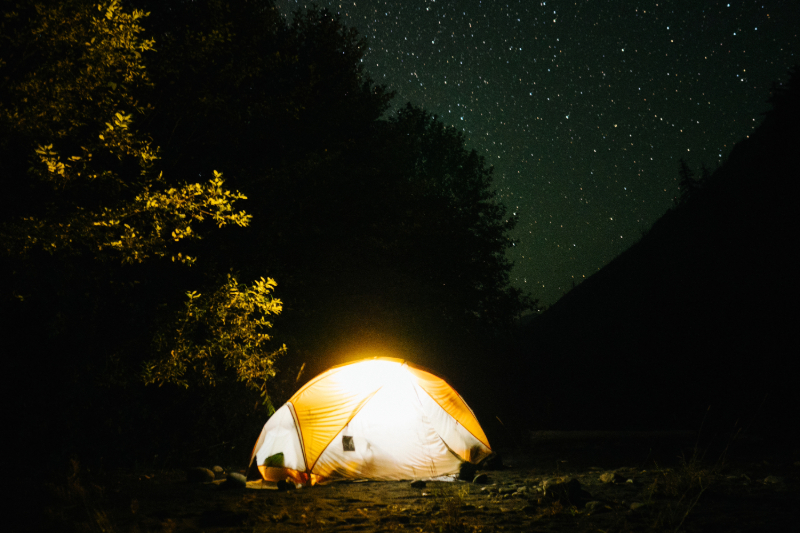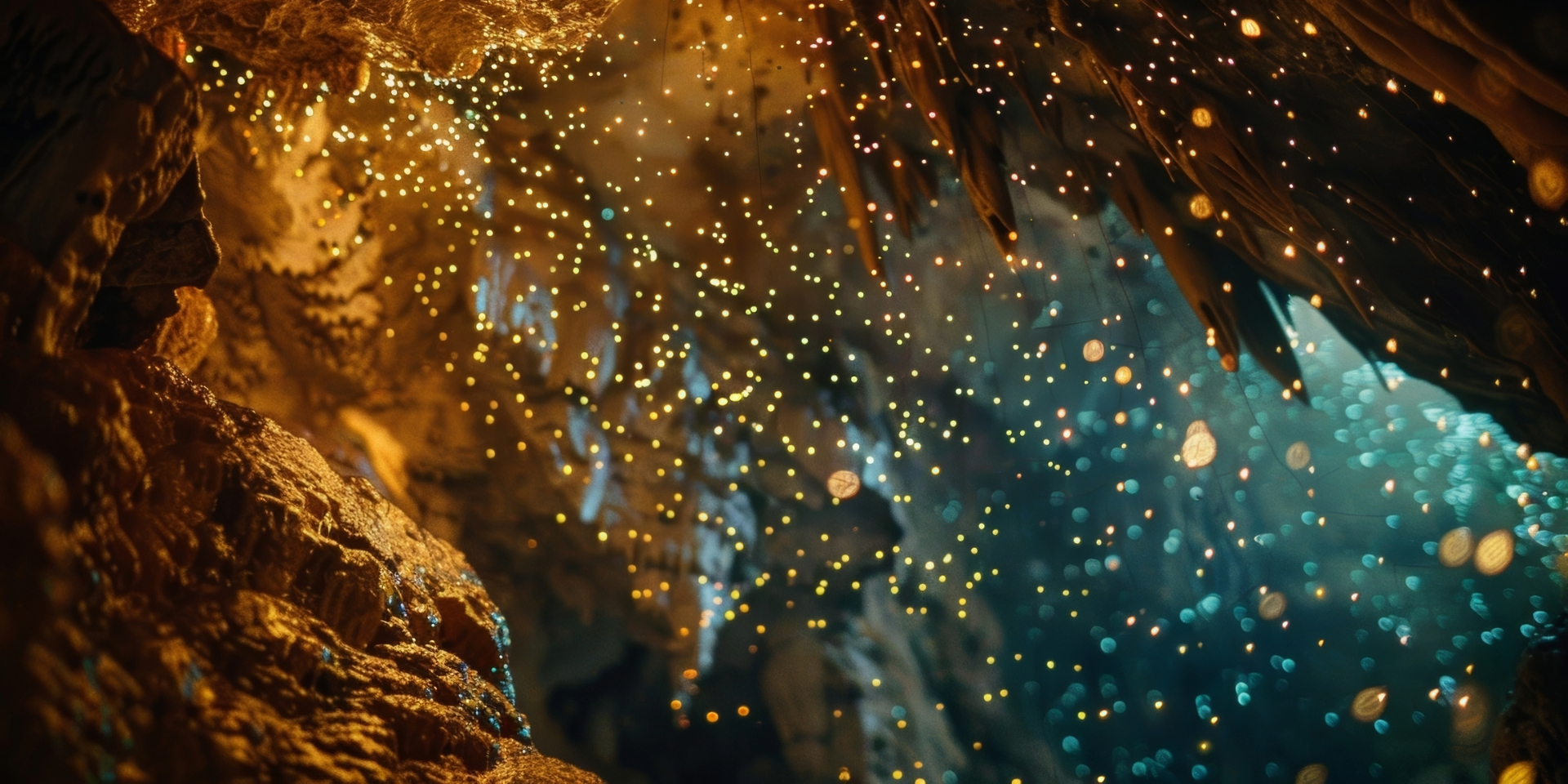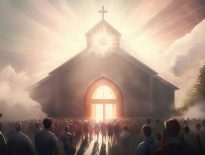With packs and tents strapped to our backs, it took our little group of three several hours to reach the hidden valley. The lush, green rainforest was cool and damp and as we gingerly clambered over moss-covered boulders, we attempted to follow an almost non-existent track that wound its way parallel to the mountain stream.
After an hour of hiking, the path transformed into a steep hill where only vines and the most stubborn of trees grew. The trail, which had previously only been faint at best, completely disappeared. Our boots became completely covered in mud as we climbed higher. Occasionally, the incline was so steep that we were forced to haul ourselves up with vines, praying they would hold both the weight of our bodies and supplies.
After a few hours of climbing, we finally reached our destination, and the thick rainforest gave way to a magnificent panorama. We were now several hundred metres above the valley floor and thanks to the added elevation, were afforded a view unlike any I’d witnessed before. The valley stretched out to the east, revealing green rolling hills, cow pastures and a rushing river. However, for all its beauty, this wasn’t our final destination. We turned away from the lookout and began to descend—not the way we had come, but deeper into the mountains.
We began to descend—not the way we had come, but deeper into the mountains
Only a few metres from the lookout was a small hole in the rock face, barely large enough for an adult to squeeze through. Once inside, the path dropped deep into a cutting. Surrounded on both sides by smooth, vertical rock, it grew deeper until we could barely make out the top. As we got to the bottom of the cutting, it opened up, revealing a small valley dotted by more moss-covered boulders, a few plants here and there—and not much else. It almost seemed like a railway tunnel, so perfectly straight and tall were the walls. Finding a place to set up camp, we lit a pathetic fire—just enough to keep us warm—and hunkered down to wait for the real reason we’d come to this hidden valley.
As the sun set and the chill of night overtook us, a deep, dark shadow was cast over the valley and we were left in complete darkness. That’s when the real show began. One-by-one, small blue-green lights appeared on the valley walls. Though only a few at first, soon the entire area was illuminated so radiant that man-made lights were outshone. This is what the hidden valley was famous for: its glow-worms. Tiny little insects who, in the right conditions, glow, thanks to their amazing bioluminescence. I’d seen glow-worms before—but never so many, all in one place. I’m talking hundreds, if not thousands of them, all at the same time. They had been there the entire time, but we didn’t have the eyes to see them.

More than matter?
Many have pondered the question of whether there is more to this life than just what we see. Once the realm of desert mystics and philosophers, whether we know it or not, this question pervades much of our popular culture today. Many popular films, TV shows and books seek to explore, whether in fiction or real life, the question of origins, truth and ultimate reality. Likewise, science, through theories on the Big Bang, evolution, multiverse and more, seek to explain ultimate reality through naturalistic means. And of course, every religious group has their own answers to these same questions—some benign, others deadly.
What I’m driving at is the question of whether there’s more to this life than just this life. Whatever the interpretive lens, we all feel the desire to “open our eyes” to the reality that undergirds all reality—if indeed such a reality exists. It’s my conviction that in fact, such a reality does exist and that it’s all around you right now—if you have the eyes to see it.

Spirit and truth
Saul of Damascus (later called Paul) is responsible for writing much of the Bible’s New Testament. He travelled throughout the Roman Empire, preaching, starting new churches and helping grow new believers’ faith. There’s a curious passage in a letter he penned to followers of Jesus in the ancient city of Ephesus that gives us an insight into Paul’s image of an alternate spiritual reality. Speaking on prayer, he instructs these early Christians to “pray in the Spirit on all occasions with all kinds of prayers and requests” (Ephesians 6:18). What does he mean? Well, the previous verses give us a clue. Paul speaks about putting on the “full armour of God”. Believers, says Paul, should arm themselves with “truth”, “justice”, “peace”, “trust”, “assurance of God’s saving power” and “God’s Word”.
We all feel the desire to “open our eyes” to the reality that undergirds all reality
These are metaphors (unless you know how to wear metaphysical concepts) but the elements of this armour are no less real. Why should they “wear” these ideals? Because, in Paul’s words, “our struggle is not against flesh and blood, but against the rulers, against the authorities, against the powers of this dark world and against the spiritual forces of evil in the heavenly realms” (6:12). What Paul is claiming here is that the real war we’re all involved in is not against earthly powers—but against spiritual powers in the spiritual realm. Like the glow-worms, the spiritual world is all around us—but most people go through life unaware it even exists. Every act of oppression, abuse, violence is animated by forces we can’t see, can’t touch—but are nevertheless very real. Christians often refer to these forces as “demons”, “fallen angels” or “spiritual evil”. If these powers sound sinister, it’s because they are. Though humans are free to make their own decisions, these powers lurk in the shadows, tempting us to act on our darkest impulses.
Spiritual powers for good
As overwhelming as spiritual evil in this world might seem, there’s good news: they don’t get the final word. In a letter to another Christian community, Paul discusses what happened on the cross—that pivotal moment in Jesus’ life when He allowed Himself to die a criminal’s death; a death He didn’t deserve. In a paradoxical sense, Paul paints this tragedy as a triumph. “And having disarmed the powers and authorities, he made a public spectacle of them, triumphing over them by the cross” (Colossians 2:15).
These same powers that are responsible for the earth’s evil are defeated by…death? It doesn’t seem to make sense but this, in Paul’s view, is how God triumphed over evil. By giving up His life, Jesus proved death could not hold permanent power over Him—and through His resurrection, likewise proved death need not hold permanent power over humanity. Though you and I will still experience death, the Christian hope is that death will “lose its sting” (1 Corinthians 15:55) because of the resurrection. You and I will die one day but we need not fear it, for “if the Spirit of him who raised Jesus from the dead is living in you, he who raised Christ from the dead will also give life to your mortal bodies” (Romans 8:11).
The Resurrection is the hope of Christianity.
The Resurrection is the hope of Christianity. This is why early Christians willingly allowed themselves to die at the hands of cruel men. They no longer feared the grave, for they worshipped the God who had defeated death itself. When they understood the war they were fighting wasn’t against the Romans or local pagan authorities, it gave them perspective to see the world for how it really was—embroiled in a cosmic conflict against powers invisible to the naked eye and yet one that topples governments and incites the worst of atrocities. And yet, they also realised that acts of kindness, compassion and generosity animated by the life-changing love of Jesus can transform the darkness of the world into light. Like Jesus on the cross, death can be overturned and, in its place, life can triumph. The hope of the resurrection transformed the lives of these men and women and it can transform your life, too. All you need to do is open your eyes and see the glow-worms.

















